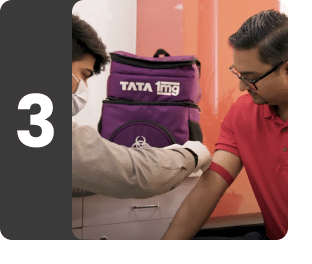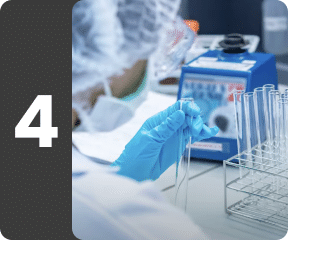Activated Partial Thromboplastin Time
Understanding Activated Partial Thromboplastin Time
What is Activated Partial Thromboplastin Time?
The Activated Partial Thromboplastin Time (aPTT) also known as partial thromboplastin time (PTT) is a screening test that helps evaluate a person’s ability to form blood clots appropriately.
This test is performed to detect bleeding and clotting disorders and to monitor the treatment with blood-thinning medicines. In case of unexplained bleeding, inappropriate blood clotting, or recurrent miscarriages and sometimes before a scheduled surgery aPTT test is performed. This test is usually performed with other tests like prothrombin time and thrombin time to measure the clotting time accurately.
Values greater than normal, could be due to bleeding disorder or liver disease. Values less than normal indicate that you may have a higher chance of getting blood clots and several miscarriages.
What is Activated Partial Thromboplastin Time used for?
The Activated Partial Thromboplastin Time Test is performed:
· To detect and diagnose bleeding or clotting disorder
· Before performing a surgical procedure to assess the risk of bleeding
· To monitor the treatment with blood-thinning medicines (e.g. unfractionated heparin therapy)
· To investigate the cause of thrombotic episodes or recurrent miscarriages
What does Activated Partial Thromboplastin Time measure?
The Activated Partial Thromboplastin Time (aPTT) test measures the time taken by the blood to form a clot after the addition of substances (reagents) which activate the clot formation.
In case of any bleeding, the body responds to stop the blood loss as quickly as possible by forming a blood clot. This process of blood clotting or coagulation is called hemostasis and involves a series of chemical reactions in the blood (coagulation cascade). During this process, the blood proteins called coagulation factors get activated one after another in a series. The activated coagulation factors lead to the formation of fibrin mesh around the platelets and other blood cells at the site of bleeding and this complex hardens to form a “blood clot”.
Coagulation cascade proceeds by two pathways, the intrinsic pathway, and the extrinsic pathway. These pathways later merge together into a common pathway. The Activated Partial Thromboplastin Time (aPTT) test measures the functioning of Blood Coagulation Factors I, II, V, XII, VIII, IX, X, and XI, along with other factors Prekallikrein (PK), and High Molecular Weight Kininogen (HK) which form parts of the intrinsic and common coagulation pathways.
The Activated Partial Thromboplastin Time (aPTT) test measures the time taken by the blood to form a clot after the addition of substances (calcium and phospholipid emulsion) which activate clotting. The aPTT test result is compared to a control sample of normal blood.
The aPTT test is usually performed along with Prothrombin Time (PT) test to evaluate the cause of a coagulation defect, if any. PT test assesses the functioning of Blood Coagulation Factors I, II, V, VII, and X, which are parts of the extrinsic and common pathways by measuring the time taken for conversion of prothrombin to thrombin.
Interpreting Activated Partial Thromboplastin Time results
Interpretations
Normal Reference Ranges:
Activated Partial Thromboplastin Time (aPTT): 30 - 40 seconds
In case the patient is receiving treatment with Heparin, the dose is adjusted so that the aPTT result is about 1.5 to 2.5 times the normal value.
Causes of prolonged aPTT are:
Inherited coagulation factor deficiencies seen in conditions like von Willebrand disease, Hemophilia A and Hemophilia B (Christmas disease) etc.
Acquired Coagulation factor deficiencies due to liver disease, deficiency of Vitamin K etc.
Presence of inhibitors, such as lupus anticoagulant and anticardiolipin antibodies, which bind to phospholipids present on the surface of platelets
Disseminated intravascular coagulation (DIC)
Leukemia
Causes of shortened aPTT are:
Disseminated intravascular coagulation (in early stages)
Extensive cancer (eg, ovarian, pancreatic, colon cancer)
The PT and aPTT tests are usually performed and evaluated simultaneously, and the results may be interpreted as follows:
PT RESULT | aPTT RESULT | CONDITIONS INDICATED |
High | Normal | Liver diseases, Vitamin K deficiency, reduced activity of Factor VII, Disseminated Intravascular Coagulation (DIC), Warfarin treatment |
Normal | High | Reduced activity of Factors VIII, IX, XI, or XII, von Willebrand disease, autoantibodies destroying one or more coagulation factors |
High | High | Reduced activity of Factors I, II, V or X, liver diseases, DIC, an overdose of Warfarin |
Normal | Normal | Normal hemostasis usually. However, normal results may also appear in a mild reduction in coagulation factor activity and mild cases of von Willebrand disease. |
Frequently Asked Questions about Activated Partial Thromboplastin Time
Q. What diseases can affect blood clotting to cause bleeding disorders?
Q. What are some apparent symptoms of bleeding or clotting disorders?
Q. Is there any preparation required before the aPTT test?
Q. What factors can affect the aPTT test results?
Q. What additional tests can be prescribed by your doctor in case of abnormal aPTT test result?
Q. Is there any risk associated with this test?
Book a Activated Partial Thromboplastin Time test at home near me





Other tests









